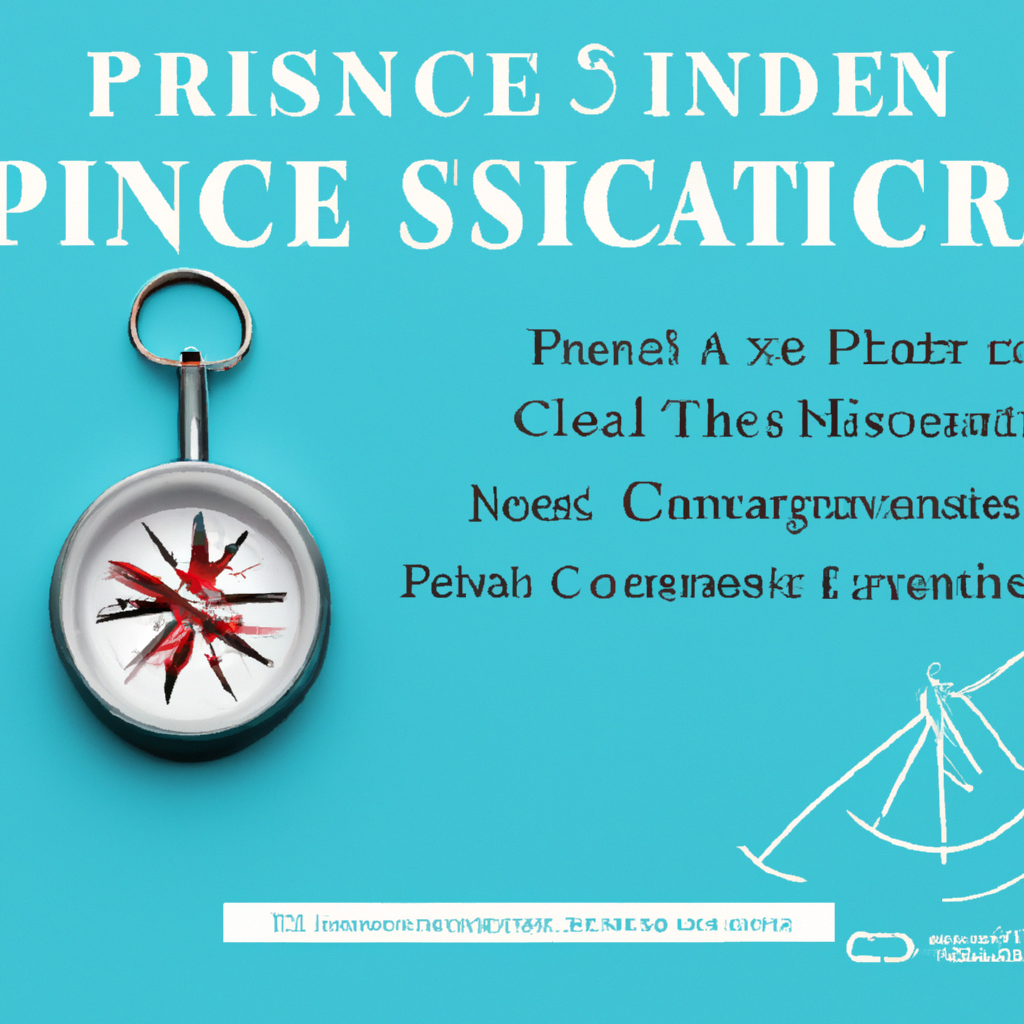Are you struggling to determine the perfect pricing strategy for your products? Look no further! In this guide, we will walk you through the step-by-step process of finding the ideal pricing strategy for your business. From understanding your target market to analyzing your competitors, we’ve got you covered. Get ready to unlock the secrets of pricing your products right, and watch your profits soar!
Understanding Pricing Strategy
Pricing strategy plays a crucial role in the success of any business. It involves setting the right price for your products or services, which can greatly impact your profitability, perceived value, and market positioning. By understanding the importance of pricing strategy and the various factors influencing it, you can make informed decisions to maximize your profits and attract your target customers. In this article, we will explore the significance of pricing strategy, the factors that influence it, and the different pricing strategies available to businesses.

Importance of Pricing Strategy
Maximizing profitability
One of the primary goals of pricing strategy is to maximize profitability for your business. By accurately setting your prices, you can ensure that your revenues exceed your costs and generate a healthy profit margin. Pricing too low may lead to insufficient profits, while pricing too high may discourage potential customers from purchasing your products. Therefore, finding the right balance is crucial to maximize profitability.
Creating perceived value
Pricing strategy also plays a significant role in creating perceived value for your products or services. The price you set for your offerings can influence customers’ perception of their quality and value. A higher price often conveys a sense of exclusivity, luxury, or superior quality, while a lower price may suggest affordability or a bargain. By strategically positioning your prices, you can shape how customers perceive the value of your products and generate demand.
Positioning in the market
Pricing strategy can also help you position your business in the market. Different pricing approaches can communicate various messages about your brand, target audience, and competitive advantage. For example, setting your prices higher than competitors may position your business as a premium brand with superior offerings, while pricing below competitors may position you as a more affordable option. Your pricing strategy can influence how your business is perceived by customers and differentiate you from competitors.

Factors Influencing Pricing Strategy
Several factors can influence your pricing strategy. By considering these factors, you can make informed decisions that align with your business goals and target audience.
Cost of production
The cost of production is a fundamental factor in setting prices. You need to ensure that your prices cover all the expenses associated with producing your products or services, including raw materials, labor costs, overhead costs, and other operational expenses. By accurately calculating your production costs, you can determine the minimum price you need to charge to break even and generate a profit.
Competitor analysis
Analyzing your competitors’ pricing strategies is crucial for positioning your business effectively in the market. By understanding how your competitors price their products, you can gain insights into their positioning, target audience, and value proposition. This analysis can help you price your products competitively while still considering your own cost structure and profit objectives.
Market demand
Market demand refers to the level of customer interest and willingness to pay for your products or services. Understanding the demand for your offerings in the market is essential for setting the right prices. If there is high demand and limited competition, you may have the flexibility to set higher prices. On the other hand, if the market is saturated or demand is low, you may need to adjust your prices to remain competitive and attract customers.
Target customers
Your target customers play a crucial role in determining your pricing strategy. Understanding their demographics, preferences, and buying behavior can help you position your prices to meet their expectations. Different customer segments may have varying perceptions of value and price sensitivity. By tailoring your prices to appeal to the specific needs and preferences of your target customers, you can attract and retain them.
Brand positioning
Your brand positioning and overall marketing strategy also influence the pricing strategy. If your brand is positioned as a high-end luxury brand, your pricing should reflect that positioning to maintain consistency and align with your target audience’s expectations. On the other hand, if your brand focuses on affordability and attracting price-sensitive customers, your pricing strategy should reflect that approach as well. Aligning your pricing strategy with your brand positioning helps maintain brand integrity and supports your overall marketing efforts.

Different Pricing Strategies
Various pricing strategies can be used to achieve specific business objectives. Each strategy has its own advantages and considerations, and choosing the right one depends on factors such as your target market, competition, and product differentiation. Let’s explore some common pricing strategies:
Cost-based pricing
Cost-based pricing involves setting prices based on the cost of production, including both variable and fixed costs, along with adding a desired profit margin. This approach ensures that your prices cover all the expenses and generate a profit. By understanding your cost structure and calculating your costs accurately, you can determine the appropriate pricing to achieve profitability.
Value-based pricing
Value-based pricing focuses on setting prices based on the perceived value of your products or services in the eyes of the customers. It involves understanding the amount customers are willing to pay for the benefits, features, and overall value they receive. By conducting market research and understanding customer preferences, you can set prices that align with the perceived value and capture a fair share of that value.
Competitive pricing
Competitive pricing involves analyzing your competitors’ prices and setting your prices either above or below them. This strategy aims to position your prices in relation to your competitors and attract customers based on perceived value or affordability. Pricing above competitors may indicate premium quality, while pricing below competitors may appeal to price-sensitive customers.
Penetration pricing
Penetration pricing involves setting a relatively low initial price to attract customers and gain a substantial market share quickly. This strategy is often used when entering a new market or introducing a new product. By pricing lower than competitors, businesses can build awareness, generate demand, and establish a customer base. However, it is essential to carefully analyze the long-term profitability and sustainability of this approach.
Price skimming
Price skimming is the opposite of penetration pricing. It involves setting a high initial price for a new or innovative product with unique features and targeting early adopters or customers who are willing to pay a premium. This strategy allows businesses to maximize revenue by capitalizing on the willingness of certain segments to pay higher prices initially. However, it may limit the growth potential and alienate price-sensitive customers.
Psychological pricing
Psychological pricing leverages the psychological tendencies and perceptions of customers to influence their buying decisions. It involves setting prices that end in certain digits, using odd or round numbers, or highlighting discounts to create the perception of value or affordability. By understanding consumer psychology, businesses can strategically set prices that appeal to their target audience and stimulate purchasing behavior.
Dynamic pricing
Dynamic pricing involves adjusting prices in real-time based on various factors such as demand, competition, and market conditions. This strategy is commonly used in industries such as travel and e-commerce, where prices can fluctuate based on demand patterns or availability. By leveraging data and technology, businesses can optimize their pricing dynamically to maximize revenue and respond to market changes effectively.
Bundle pricing
Bundle pricing involves offering multiple products or services together at a discounted price compared to purchasing them individually. This strategy aims to increase the average transaction value and encourage customers to opt for the bundle rather than individual items. By bundling complementary products or services and offering a price incentive, businesses can upsell and increase customer satisfaction.
Premium pricing
Premium pricing involves setting higher prices compared to competitors to create a perception of exclusivity, luxury, or superior quality. This strategy is often used by luxury brands or businesses that differentiate themselves based on product features or superior customer service. Premium pricing communicates a sense of uniqueness and can attract customers seeking higher-end or specialized products.
Promotional pricing
Promotional pricing involves offering temporary price reductions, discounts, or special offers to stimulate sales and attract customers. This strategy is commonly used during promotional events, seasonal sales, or to clear excess inventory. By offering enticing deals or time-limited discounts, businesses can create a sense of urgency and drive immediate sales.
In conclusion, understanding pricing strategy is essential for the success of any business. By carefully considering the factors that influence pricing decisions, such as production costs, market demand, competition, target customers, and brand positioning, businesses can choose the most suitable pricing strategy. Whether it’s cost-based pricing, value-based pricing, competitive pricing, penetration pricing, or any other strategy, each has its own benefits and trade-offs. By selecting the right pricing strategy and adjusting it based on market dynamics, businesses can maximize their profitability, create perceived value, and position themselves effectively in the market.












